Prioritizing Vulnerabilities: Strategies for Effective Risk-Based Management
December 26, 2024
Hackers 2.0: How AI is Supercharging Cybercrime – And How SIRP Can Help You Stay Ahead
January 6, 2025
Prioritizing Vulnerabilities: Strategies for Effective Risk-Based Management
December 26, 2024
Hackers 2.0: How AI is Supercharging Cybercrime – And How SIRP Can Help You Stay Ahead
January 6, 2025BLOG
Automating Chaos: Why Optimization Comes Before Automation
Introduction: The Automation Hype
Automation has taken the world of operations by storm. It promises speed, efficiency, and cost savings — and it often delivers. But there’s a hidden trap that many organizations fall into: automating processes that are fundamentally flawed. Instead of driving excellence, this approach magnifies inefficiencies, bottlenecks, and inconsistencies.
At SIRP, we’ve seen firsthand how this plays out. Automation isn’t a magic wand; it’s a multiplier. It works wonders when applied to optimized workflows, but it can amplify chaos when used blindly.
This is why our Onboarding Analysts and Customer Success Managers start every engagement by addressing a critical question: Is this process worth automating in its current form?
The Hidden Dangers of Automating Flawed Processes
The promise of automation is alluring. It’s marketed as a shortcut to operational excellence, a way to free up resources, and a tool to achieve more with less. However, automation is not inherently transformative. If your workflows are inefficient, adding automation can exacerbate the problems.
For instance, a global financial services company once attempted to automate their incident escalation process without reviewing its structure. The result? Delays doubled, as the automation followed an already cumbersome approval chain that involved redundant steps. Far from improving outcomes, the automation multiplied the inefficiencies.
Automation applied to broken processes can lead to wasted resources, frustrated teams, and unmet goals. Organizations must realize that true efficiency starts with optimization.
The SIRP Approach: Optimizing Before Automating
At SIRP, we don’t just implement automation for the sake of it. We follow a systematic, collaborative approach to ensure our clients achieve sustainable success.
Step 1: Diving Deep with Process Analysis
Every journey begins with understanding where you are. When onboarding a new client, we immerse ourselves in their current workflows. Our team works closely with the SOC to map out each process, uncovering inefficiencies, redundant steps, and missed opportunities.
For one of our clients, this phase revealed a critical issue: their incident response workflows were riddled with manual checkpoints that not only slowed resolution but also led to missed SLA targets. By visualizing the process end-to-end, we were able to pinpoint areas needing immediate attention.
Step 2: Collaborating to Create Optimized Workflows
Next, we collaborate with the SOC team to rebuild these workflows from the ground up. This isn’t just about cutting steps; it’s about ensuring that every action aligns with the organization’s objectives and operational goals. For our aforementioned client, this meant creating streamlined escalation paths, reducing unnecessary approvals, and integrating playbooks designed for speed and precision.
Optimization often requires cultural shifts. We encourage teams to adopt a mindset of continuous improvement, questioning legacy practices and focusing on measurable outcomes.
Step 3: Strategic Automation That Delivers ROI
Only when workflows are optimized do we introduce automation. For the client in question, automating their newly refined incident response workflows reduced their average resolution time by 65%. The streamlined processes, combined with automation, empowered their team to focus on proactive threat hunting rather than routine, repetitive tasks.
We carefully design automations that adapt to evolving needs, ensuring that the benefits scale as the business grows.
Step 4: Continuous Improvement
Optimization doesn’t end with deployment. As businesses evolve, so do their workflows. Our team remains engaged post-implementation, ensuring that automations scale and adapt to new challenges. Regular feedback loops help identify new opportunities for refinement.
Case Study: ROI that Speaks Volumes
When a Fortune 500 company switched their SOAR platform to SIRP, they were already leveraging automation. Yet their ROI was lackluster, and their SOC was overwhelmed. The root cause? They had automated processes that weren’t ready for it.
With SIRP’s approach, we identified over 40 unoptimized workflows. One example was their phishing alert triage process, which involved unnecessary back-and-forth between analysts and managers. After optimizing and automating this workflow, they saw a 4x ROI increase within the first year.
Additionally, their team’s morale improved, as analysts were freed from tedious, repetitive tasks and could focus on strategic initiatives. Automation became a tool for empowerment, not frustration.
Actionable Insights: How to Avoid Automating Chaos
Organizations looking to implement automation can take these steps to ensure success:
- Evaluate Current Workflows: Map out existing processes, identifying redundancies and pain points.
- Engage Stakeholders: Collaborate with the teams involved to gain insights into daily challenges and aspirations.
- Prioritize Optimization: Before automating, ensure workflows are aligned with business goals and designed for scalability.
- Set Measurable Goals: Define clear KPIs for both optimization and automation, ensuring progress can be tracked.
- Commit to Iteration: Regularly revisit workflows and automations to adapt to new challenges and opportunities.
The Takeaway: Build Before You Scale
The attraction of automation can be strong, but it’s not a shortcut to success. The true value of automation lies in its ability to scale great processes — not fix broken ones.
At SIRP, we don’t just sell automation tools; we partner with our clients to ensure that their workflows are worthy of automation. By focusing on process optimization first, we help organizations unlock the full potential of their SOAR platform.
If you’re ready to transform your operations and achieve measurable results, let’s talk. Together, we’ll build a foundation for efficiency, scalability, and success.

